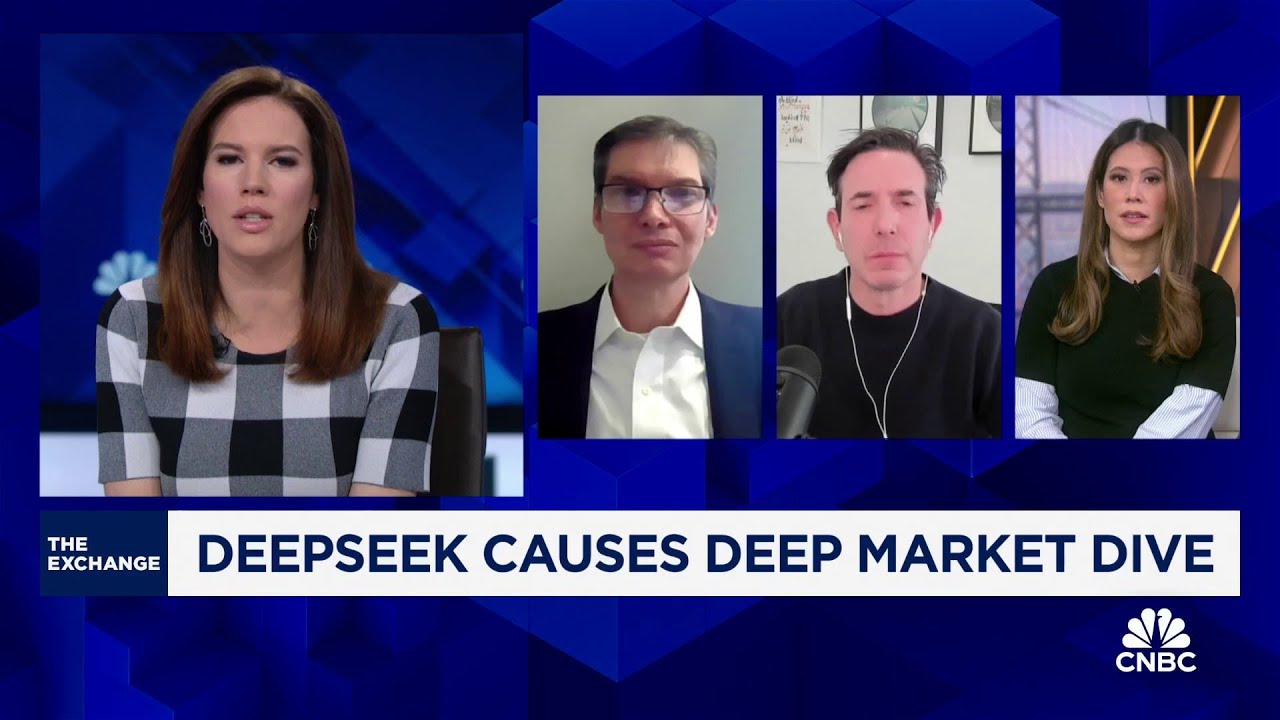The video discusses how China’s DeepSeek and its low-cost AI model, the DeepSea R1, are challenging the U.S. AI landscape, prompting concerns among American companies and significant sell-offs in tech stocks. Panelists emphasize the urgent need for U.S. firms to innovate and adapt to remain competitive, as DeepSeek’s advancements highlight a potential shift in the AI race.
The discussion centers around China’s DeepSeek and its impact on the AI landscape, particularly in relation to the U.S. market. DeepSeek’s low-cost AI model, the DeepSea R1, has raised concerns among American companies, leading to significant sell-offs in tech stocks. Analysts and venture capitalists are debating the implications of this innovation, with some suggesting that the U.S. has been out-innovated due to a lack of diverse approaches in AI development. The conversation highlights the urgency for American companies to adapt to this new competitive environment.
Bradley Tusk, a venture capitalist, emphasizes that any company not leveraging AI is at a disadvantage, especially when DeepSeek offers a more affordable alternative. He points out that the traditional AI models from companies like OpenAI are costly, making it difficult for U.S. firms to compete if they do not innovate rapidly. The panelists agree that the U.S. has fallen behind in the AI race, and there is a pressing need for a shift in strategy to regain a competitive edge.
The conversation also touches on the market’s reaction to DeepSeek’s advancements, with some stocks experiencing declines of 15-20%. Tavis McCourt from Raymond James notes that this reflects a lack of conviction in the market, as investors are reacting to the potential for innovation rather than the fundamentals of the companies involved. The panelists discuss the volatility in the AI sector and the uncertainty surrounding which companies will emerge as winners in this rapidly evolving landscape.
Deirdre Bosa highlights the controversy surrounding the technology used by DeepSeek, particularly the use of Nvidia’s H800 chips, which are considered inferior to the H100 models. She argues that the export bans imposed by the U.S. have inadvertently spurred innovation in China, allowing DeepSeek to create competitive models at a fraction of the cost. This has raised questions about the effectiveness of U.S. policies and whether they need to be reevaluated in light of China’s advancements.
Finally, the panelists conclude that while DeepSeek’s success poses challenges for American companies, it also serves as a wake-up call for the need to innovate and adapt. The stakes have risen, and U.S. firms must invest significantly in AI development to maintain their leadership position. The discussion underscores the importance of open-source models and the potential for a new race in AI development, as companies scramble to keep pace with the advancements made by DeepSeek and others in the field.
